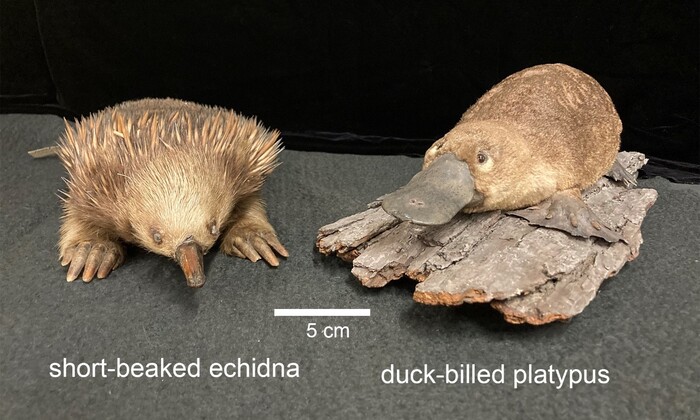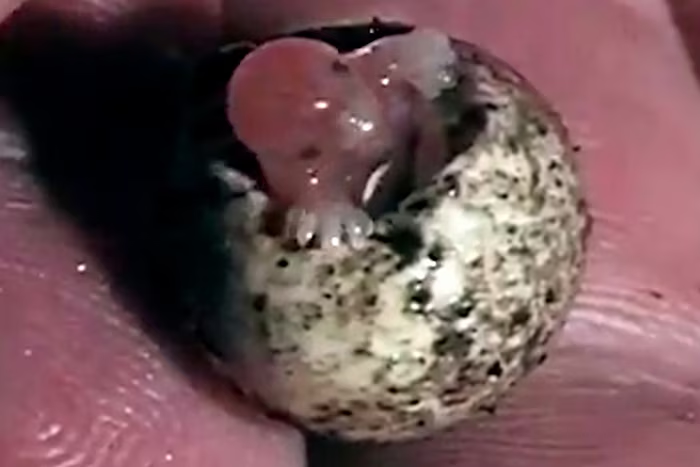When you think of mammals, the first characteristics that come to mind are likely warm-blooded, live births, and fur or hair. But did you know that there are certain mammals that lay eggs? These unique creatures belong to a group known as monotremes, a subgroup of mammals that have retained some traits that are more commonly associated with reptiles. This article explores the world of mammals that lay eggs, diving into the species, reproductive methods, and how they differ from other mammals.

Mammals that lay eggs, also known as egg-laying mammals, are fascinating and rare creatures. The two main examples of egg-laying mammals are the platypus and the echidna. These species belong to the monotremes group, a distinct class of mammals that differ significantly from placental mammals and marsupials.
Monotremes are considered some of the most primitive living mammals, with characteristics that are more similar to reptiles than to other mammals. Unlike placental mammals, which give birth to live young, monotremes reproduce by laying eggs. This evolutionary anomaly provides unique insights into the history of mammalian evolution.
One of the most famous mammals that lay eggs is the platypus. Native to Australia, this egg-laying mammal is known for its duck-like bill, webbed feet, and venomous spurs on its hind legs. Platypus egg-laying is a particularly rare trait among mammals, and it is fascinating to observe how they incubate their eggs.
The female platypus lays one to three eggs at a time, which she incubates in a burrow for about ten days. After hatching, the young are fed with milk, though platypus do not have nipples—instead, milk is secreted through openings in the skin and absorbed through the young's fur.
Another example of a mammal that lays eggs is the echidna, often referred to as the spiny anteater. Echidnas are also found in Australia and New Guinea, and like the platypus, they belong to the monotreme group. Echidna egg-laying is similar to that of the platypus, though echidnas lay only one egg at a time, which is incubated in a special pouch on the mother's belly.
The egg of an echidna is leathery, rather than hard, similar to those of reptiles. After about ten days, the egg hatches, and the baby echidna, called a puggle, is born. The mother then continues to nurse her baby for several months until it is able to survive on its own.
Monotreme mammals, such as the platypus and echidna, are often described as the most primitive living mammals. They offer a glimpse into the early stages of mammalian evolution when our ancestors were still developing the reproductive traits we associate with mammals today.
One key difference between monotremes and placental mammals (like humans, dogs, and whales) is their mode of reproduction. While placental mammals give birth to live young after an internal gestation period, monotremes lay eggs and rely on external incubation. This method is a reflection of the unique reproductive methods in mammals that make monotremes such an interesting subject of study.

The reproductive differences between mammals with eggs (monotremes) and placental mammals are significant. Placental mammals have a more advanced method of reproduction, involving a placenta that nourishes the developing fetus inside the mother's body. This process allows for the young to be born fully developed and able to survive in the external environment.
In contrast, egg-laying mammals must rely on external incubation for their young to develop. The eggs of monotremes are laid in burrows or pouches, where they are kept warm until hatching. Unlike placental mammals, the young of egg-laying mammals are born in a very underdeveloped state and need to be nursed and cared for by the mother for extended periods.
Monotreme facts reveal just how unique these mammals are in the animal kingdom. Here are a few key points about monotremes:
Monotremes are the only mammals that lay eggs.
They have a mix of reptilian and mammalian features, such as laying eggs like reptiles and producing milk like mammals.
Both the platypus and echidna have spurs on their hind legs, a feature rarely seen in other mammals.
Platypus egg-laying is done in burrows, while echidnas incubate their eggs in specialized pouches.
Monotremes are native to Australia and New Guinea, and they are considered evolutionary links between reptiles and mammals.
Mammals that lay eggs play a critical role in understanding mammalian evolution. By studying monotreme mammals, scientists can learn more about the evolutionary transitions between reptiles and mammals, shedding light on how mammals evolved from egg-laying ancestors into the live-birthing species we see today.
While monotremes are considered primitive, they represent an essential part of the evolutionary tree. Their egg-laying reproduction helps us better understand the diversity of reproductive strategies within the mammalian class and highlights the adaptability of life forms in different environments.
To wrap up, mammals that lay eggs, like the platypus and the echidna, are some of the most remarkable and unique creatures on Earth. With their unusual reproductive methods and fascinating traits, these egg-laying mammals continue to captivate scientists and nature lovers alike. They are living proof of the diversity and adaptability of life on our planet.
| Species | Egg-Laying Mammal | Egg Characteristics | Reproduction |
|---|---|---|---|
| Platypus | Yes | Soft eggs, laid in burrows | Eggs incubated for 10 days |
| Echidna | Yes | Leathery eggs, incubated in a pouch | Single egg laid at a time |
| Monotremes | Yes | Both species lay eggs | Incubation period varies |
This article is designed to inform readers about the intriguing world of mammals that lay eggs. It’s not only a fascinating topic but also an essential part of understanding the evolution of mammals.
animal tags: mammals-that-lay-eggs
We created this article in conjunction with AI technology, then made sure it was fact-checked and edited by a Animals Top editor.